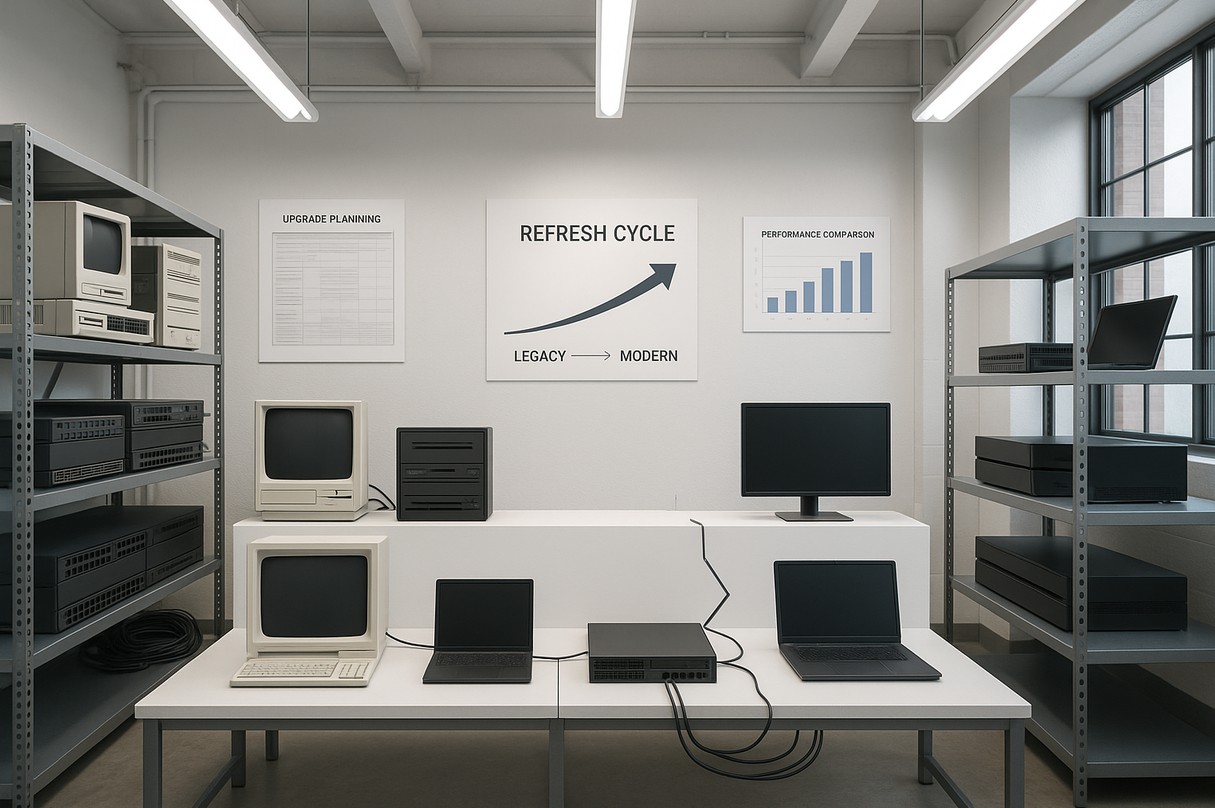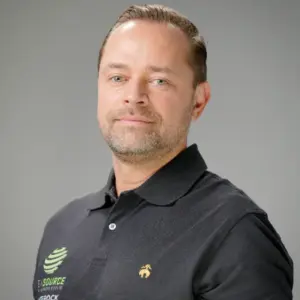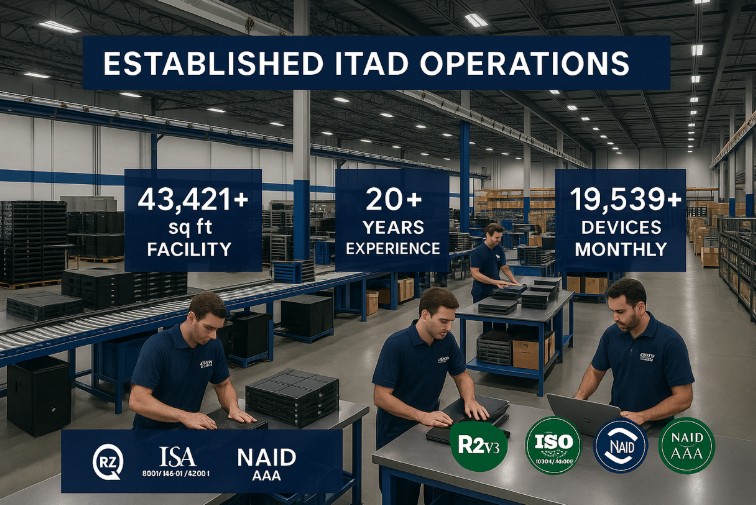Stuck in a cycle of slow logins, sluggish systems, and mounting support tickets? You’re not alone. Many organizations continue to rely on aging infrastructure, unaware that outdated hardware isn’t just a nuisance but a serious threat to performance, security, and profitability. The average cost of IT downtime has climbed as high as $9,000 per minute for large organizations. Embracing a strategic hardware refresh cycle is no longer optional, it’s imperative.
Organizations today face relentless pressure to remain agile and efficient amid rapid technological evolution. Legacy systems, once reliable, often hinder scalability and obstruct integration with emerging innovations. By adopting a forward-looking hardware strategy, companies optimize performance and fortify digital resilience in a competitive marketplace.
Why Refresh Cycles Matter in 2025
The stakes for maintaining modern IT infrastructure have never been higher. According to Gartner, global IT spending is expected to reach $5.74 trillion by 2025, with a significant portion allocated to device refreshes and software updates. Delaying these refresh cycles not only creates performance bottlenecks but also increases the risk of compliance violations and cyber threats.
With hybrid workforces, expanding digital ecosystems, and evolving cyberattack vectors becoming the norm, static hardware strategies are no longer sufficient. Organizations must embrace dynamic, lifecycle-based refresh planning to stay resilient. Failing to modernize IT equipment regularly can lead to more than just security gaps—it can result in talent attrition, customer dissatisfaction, and loss of competitive edge.
Understanding the IT Equipment Lifecycle
A robust IT refresh strategy begins with a clear understanding of the three stages of the IT equipment lifecycle: procurement, maintenance, and decommissioning.
1. Procurement involves evaluating and selecting technology assets that align with current and future business objectives. Effective procurement planning includes:
- Compatibility checks with existing infrastructure.
- Vendor negotiation and relationship management.
- Forecasting to avoid premature obsolescence.
When done strategically, procurement improves budget accuracy, strengthens vendor partnerships, and enables businesses to capitalize on bulk pricing and early upgrade incentives. See our procurement approach.
2. Maintenance is about ensuring that assets remain in peak operating condition. This includes:
- Applying security patches and firmware updates.
- Monitoring performance and reliability.
- Tracking software compatibility.
Organizations that prioritize preventative maintenance can reduce downtime and service desk overload. According to the IDC, aging IT hardware regularly can consume up to 60% of the IT support budget, emphasizing the cost of delaying refreshes. Maintenance also supports cybersecurity readiness, end-user satisfaction, and longer asset lifespans through proactive diagnostics and performance benchmarking.
3. Decommissioning is often overlooked but critical. At the end of an asset’s useful life, businesses must:
- Securely erase or destroy data.
- Responsible recycling or repurposing of components.
- Recover residual value through remarketing.
This phase is critical for meeting data protection regulations, reducing e-waste, and freeing up space and resources for newer technology deployments. Explore our data destruction and secure ITAD services.
A successful IT lifecycle management reduces risk, maximizes return on investment (ROI), and keeps infrastructure aligned with business goals. As organizations scale, standardizing these processes across departments is key to operational maturity and strategic agility.
Best Practices for Managing Hardware Refresh Cycles
A seamless hardware refresh cycle started with proper planning and execution. The more strategic your approach, the less disruption and the more value you’ll unlock.
Start with a Detailed Asset Inventory
Effective refresh planning begins with a comprehensive, up-to-date IT inventory. Organizations need full visibility into:
- What assets are deployed?
- Each device’s age, usage levels, and warranty status.
- Lifecycle stage and service history.
Conducting regular audits uncovers blind spots and supports compliance reporting. Involving department leaders in asset reviews ensures real-world insights are reflected in refresh priorities.
See how we support IT asset visibility.
Leverage Asset Management Platforms
Automating your asset tracking through a centralized asset management platform streamlines refresh cycles by:
- Providing real-time usage and performance insights.
- Identifying failure trends and replacement timelines.
- Supporting audit trails and compliance.
Establishing a cross-functional IT governance committee can further enhance refresh planning by aligning technology goals with finance, operations, and compliance requirements.
Use Staggered Refresh Schedules to Balance Budgets
Instead of refreshing all hardware at once, implement a phased refresh model.. By staggering equipment updates across departments or locations on a rolling basis, organizations maintain performance standards while smoothing out capital expenditures.
Building Organizational Buy-In for IT Refresh Initiatives
One of the biggest challenges in executing a successful hardware refresh strategy is gaining alignment across departments. While IT may see the urgency of outdated systems, other teams often view upgrades as avoidable costs
Reframe Refreshes as Business Value Investments
IT leaders must position refresh cycles as proactive investments, not just equipment purchases. By tying refresh cadence to key performance indicators (KPIs) like reduced ticket volume, enhanced uptime, and improved user satisfaction scores, IT teams can demonstrate how refreshed infrastructure directly supports revenue goals and operational efficiency.
Organizations should also use internal case studies to show how replacing underperforming assets has historically led to faster cycle times, reduced service interruptions, and smoother cross-functional workflows.
Financial Strategies for IT Hardware Refresh
Refresh investments can be budgeted more effectively through proper planning and flexible models.
Budgeting for Long-Term IT Sustainability
To optimize budget allocation, organizations should align their hardware refresh cycles with depreciation schedules and warranty expirations. This approach maximizes value before devices become a cost liability and ensures capital is allocated to assets that deliver ROI.
Incorporating refresh timelines into annual IT planning and total cost of ownership (TCO) models enables:
- Better forecasting accuracy.
- Smarter lifecycle timing.
- Easier justification of refresh costs to stakeholders.
Buying vs. Leasing: Which Model Fits Your Infrastructure?
Buying versus leasing, purchasing decisions should be guided by your organization’s financial strategy and growth outlook.
- Leasing offers predictability and refresh consistency, ideal for fast-growing teams or hybrid environments.
- Purchasing may offer greater control and cost savings for stable IT infrastructures.
Some companies also benefit from a blended model—leasing endpoint devices (like laptops and tablets) while purchasing core infrastructure (like servers and networking equipment) to balance liquidity and performance.
Learn about OEMSource’s flexible supply models.
Unlocking Value Through Re-Marketing and Trade-In Programs
Businesses can further offset refresh costs by participating in IT asset remarketing or trade-in programs. These programs help:
- Recover residual value from older devices.
- Reduce total upgrade costs.
- Support sustainable IT initiatives by extending device lifecycles.
Ensuring Sustainability and IT Compliance in Hardware Lifecycle Management
Sustainability and compliance aren’t just ethical initiatives, they’re strategic imperatives in today’s IT environment.
Proper IT asset disposition (ITAD) reduces risk, reinforces stakeholder trust, and keeps organizations audit-ready. Many organizations lack accurate inventory controls for their technology assets. Working with vendors who hold recognized certifications, such as R2, provide assurance to stakeholders and regulators. Implementing sustainable practices also helps organizations meet ESG (environmental, social, and governance) reporting requirements and attract environmentally conscious partners and customers.
Sustainability Priorities for IT Leaders
Organizations looking to improve their ESG posture should focus on:
- Reducing landfill waste through certified e-waste recycling.
- Reclaiming high-value materials from end-of-life assets.
- Leveraging energy-efficient replacements during refresh cycles.
- Aligning with internal ESG targets and annual reporting metrics.
- Promoting circular economy principles by extending asset lifecycles through reuse and refurbishment.
IT Compliance Priorities for IT Leaders
Secure, standards-aligned hardware retirement requires:
- Secure data destruction before decommission.
- Chain-of-custody documentation is preserved.
- Vetting vendors meets international ITAD standards.
- Internal audits that validate asset tracking, data erasure, and IT disposal protocols.
- Staff training on the secure handling and return of sensitive hardware.
Future-Proofing Your Business: Key Takeaways for a Smarter IT Hardware Refresh Strategy
A well-executed hardware refresh cycle is more than just routine maintenance, it’s a strategic driver of business continuity and growth. From enhancing security and ensuring compliance to boosting productivity and lowering operational costs, each phase of the refresh lifecycle contributes to long-term performance. The most successful organizations don’t wait until devices fail, they proactively manage assets and partner with lifecycle specialists like OEMSource to future-proof their infrastructure.
To recap:
- Establish a formal refresh timeline (typically 3-5 years based on business needs).
- Leverage an asset management platform to monitor performance and automate lifecycle milestones.
- Consider leasing models for cost flexibility and predictable refresh schedules.
- Prioritize sustainability and compliance by working with certified ITAD partners.
Whether you’re supporting a small remote workforce or a modernizing global enterprise infrastructure, a proactive refresh strategy minimizes risk, reduces total cost of ownership, and supports long-term digital growth.
Ready to refresh with confidence? Explore OEMSource’s lifecycle planning and ITAD services to build a smarter, more secure infrastructure.
Frequently Asked Questions
What are the 5 stages of data lifecycle management?
The five stages of data lifecycle management include:
- Creation: Data is generated or captured.
- Storage: Data is saved in local or cloud-based environments.
- Usage: Data is actively used in business operations.
- Archival: Data is preserved for long-term access or compliance.
- Destruction: Data is securely deleted when no longer needed.
What is the refresh cycle?
A refresh cycle refers to the planned replacement of IT hardware—typically every 3-5 years—to:
- Maintain security integrity.
- Support modern software applications.
- Avoid downtime and compliance issues.
- Ensure compatibility.
Improve operational continuity.
What is the IT asset lifecycle management process?
The lifecycle process includes:
- Acquisition
- Deployment
- Monitoring and maintenance
- Decommissioning and disposal
This process maximizes asset value while ensuring security and operational efficiency.
What is the IT lifecycle management plan?
An IT lifecycle plan provides a strategic framework for managing technology assets across departments. It includes:
- Procurement and refresh timing
- Maintenance checkpoints
- Risk reduction strategies
- Cost recovery goals
- Prioritization based on business impact
How does lifecycle planning reduce IT costs?
Proactive lifecycle management helps reduce the total cost of ownership by:
- Minimizing emergency replacements.
- Extending asset lifespan.
- Reducing downtime and service tickets.
- Aligning upgrades with budget cycles.
It ensures consistent performance without unexpected budget strain.





